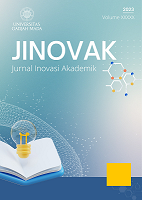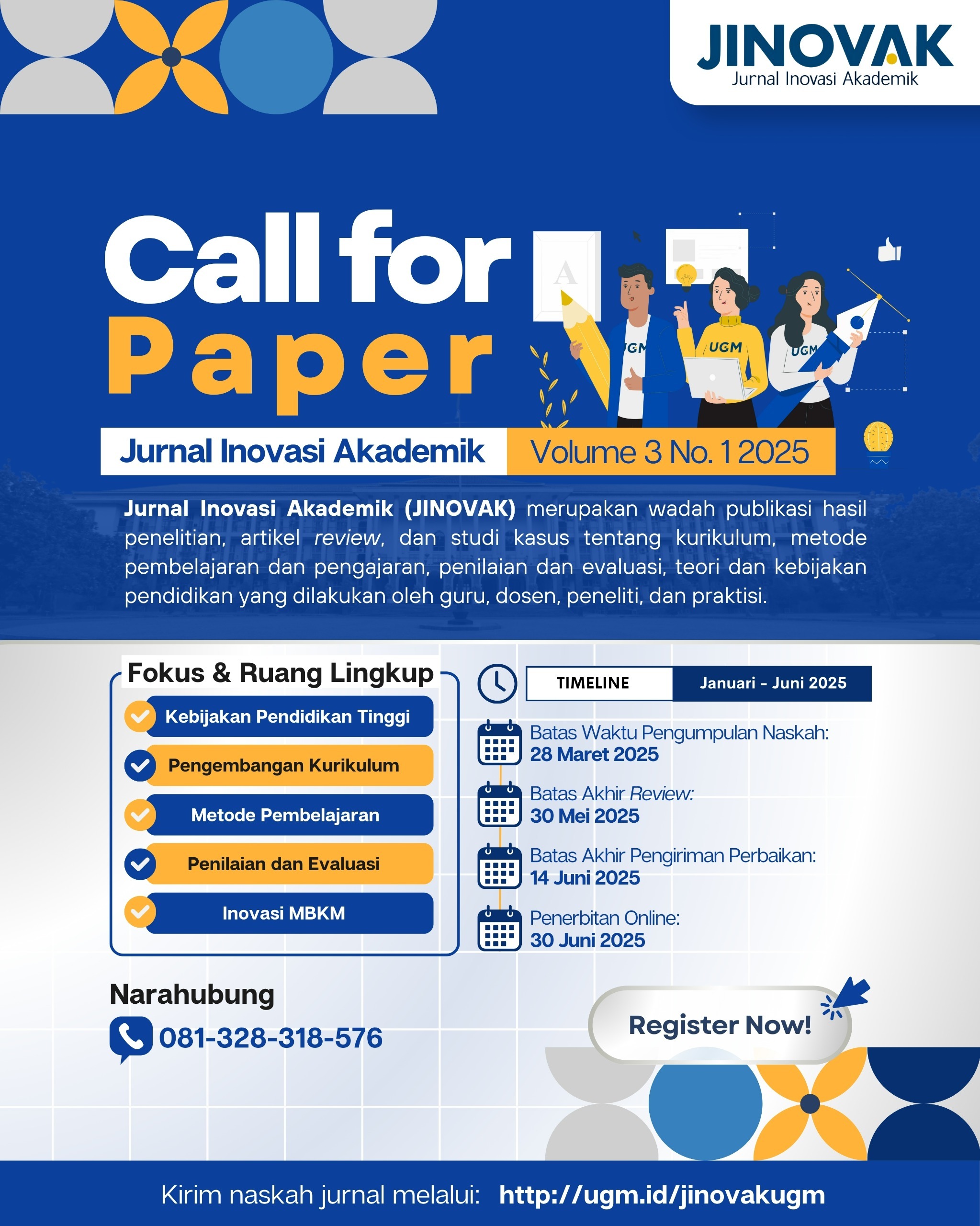Author Guidelines
The manuscript should be within the focus and scope, and should be an original work that has not been previously published or submitted to another journal. Furthermore, articles that have been presented in forums, such as seminars, should mention the forum. All submitted manuscripts should comply to the APA style and follow the provided template.
The manuscript should be written in proper Indonesian or English Language. Furthermore, the word count (from abstract to conclusion) should be a minimum of 4000 and a maximum of 7000, in one column with 1.5 spacing, A4 paper, Times New Roman 12-point font, and created using Microsoft® Word program.
The title should be brief but sufficient to describe the substance of the manuscript. The title in Indonesian should be a maximum of 14 words, and a maximum of 12 words in English.
The authors’ names are written without titles and can be a single author or a group. The corresponding author should be provided with an email address.
The agencies and addresses are put under the names, including their affiliation and address.
The abstract should be written in both Indonesian and English, consisting of 200 to 250 words in one paragraph containing (1) the problem, (2) the purpose, (3) the methods, and (4) the results of the research.
The keywords should consist of 3-5 words that are not the main words in the title and serve to help search commands.
The body consists of:
-
INTRODUCTION: includes the background, key issues and literature review, purpose, and novelty.
-
METHODS: describes the participants' characteristics or materials and instruments, provides a clear description of all stages, as well as specifies the type of data analysis used. Also, studies involving human participants need to provide a statement of ethical approval.
-
FINDINGS AND DISCUSSION: presents research findings, including statistical analysis results, either in text, tables, or figures. The discussion highlights the implication of the findings on sustainable development as well as the research limitations.
-
CONCLUSION: summarizes the objective and findings in a concise and clear paragraph.
-
ACKNOWLEDGEMENT: acknowledges all contributors to the article, including those who provided writing or editorial assistance.
-
REFERENCES: cultivated from primary sources (journals/magazines scientific or research reports) and current / latest (maximum 10 years). The references only list the sources referenced in the article body. Otherwise, the name referenced in the body should exist in the bibliography. Writing a reference follow the example below.
- Journal
Print:
Kusuma, F. I., Sutadji, E., & Tuwoso. (2014). Kontribusi dukungan orang tua, penguasaan pengetahuan dasar, dan motivasi berprestasi terhadap pencapaian kompetensi kejuruan. Jurnal Kependidikan, 44(1), 1-14.
Online:Kusuma, F. I., Sutadji, E., & Tuwoso. (2014). Kontribusi dukungan orang tua, penguasaan pengetahuan dasar, dan motivasi berprestasi terhadap pencapaian kompetensi kejuruan. Jurnal Kependidikan, 44(1), 1-14. Dari: http://journal.uny.ac.id/index.php/jk/article/view/2187. (attached DOI if any).
- Book:
Page, A. C., & Stritzke, W. G. K. (2015). Clinical psychology for trainees: Foundations of science-informed practice(2nd ed.). Cambridge: Cambridge University Press
- Newspaper/ Magazine article:
Arman, S. A. (January 19, 2013). Mempertimbangkan kembali pemberlakuan kurikulum baru. Kompas, 5.
For online newspapers, the website address should be attached.
- Paper
Wilujeng, I., Masruri, M. S., & Wangid, M. N. (April, 2016). Pengembangan subject specific pedagogy tematik untuk mengembangkan karakter siswa sekolah dasar. Makalah dipresentasikan dalam Seminar Nasional Penelitian dan PPM untuk Mewujudkan Insan Unggul, Yogyakarta.
For the online paper, the website address should be attached.
- Thesis
Lestari, S. N. D. (2014). Analisis faktor-faktor yang mempengaruhi kinerja pengelolaan keuangan PTN: Studi kasus di UGM (Tesis UGM).
- How to refer to the authors in the article body mentioning the last name of the authors (according to the bibliography), year, and page.
Example: Woodside (2010, pp. 53-55); (Woodside & Roger, 2010, p. 53) or Woodside and Roger (2010) explained ...... (pp.53-55).
Direct referral (without changing anything), typed single-spaced indented entrance to the right 7 beats, the left and right.
- Journal
-
TABLE AND FIGURE: the table should be made in Microsoft® Word, not copy-pasted from Microsoft® Excel. Image resolution should be clear and proportional in size.



.png)

